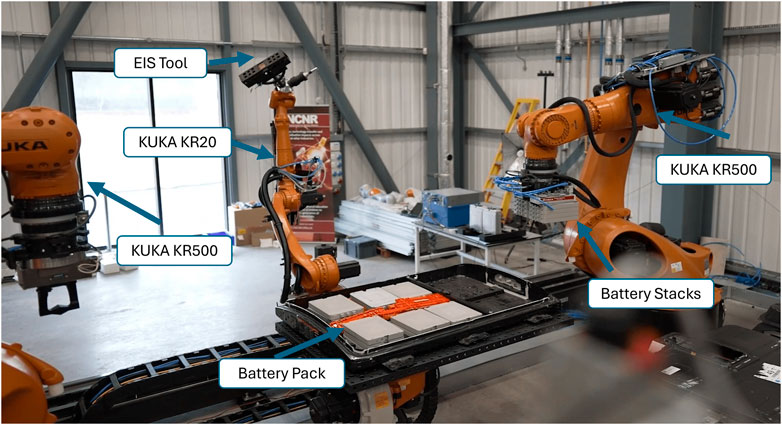We developed a robotic workflow that automates electrochemical impedance spectroscopy (EIS) for electric vehicle batteries. A KUKA KR20 mounted on a 5 m rail cooperates with a custom end-of-arm potentiostat to deliver repeatable connections, measure impedance spectra, and let human operators intervene whenever necessary.

System Highlights
- Shared autonomy allows the robot to operate fully automatically yet hand control back to an operator through an admittance controller for delicate alignment.
- Force/torque sensing safeguards connections, while the rail extends the work envelope to handle packs of varying size.
- Finite element analysis validated the structural rigidity of the custom end-of-arm tooling.
Results
- The platform differentiated battery modules with degradation levels up to 1.5 mOhm internal resistance.
- Automated procedures reduced human exposure to high-voltage components and improved repeatability over manual probes.
- The workflow scales to production thanks to modular design and rapid reconfiguration for new pack architectures.